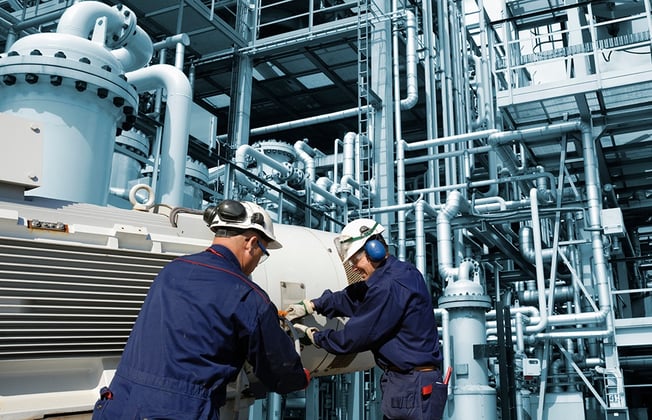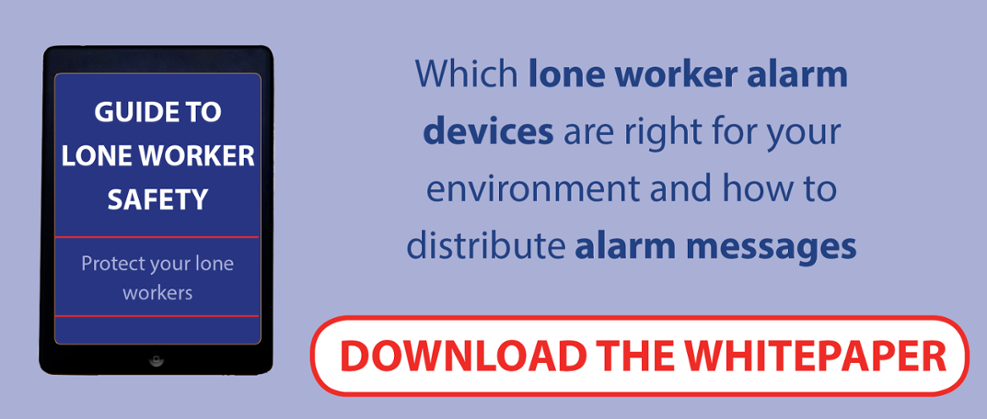
From engineers servicing wind farms to workers employed in the soft drinks manufacturing industry, employees in many different sectors can find themselves at risk from toxic gases. Lone workers are at a particularly enhanced risk as they do not have the benefit of work colleagues on site with them to provide timely first aid or to alert the emergency services in the event of a toxic gas related incident. This article explains how managers can implement technological solutions in order to surmount the challenges associated with lone working in environments when toxic gas is a potential hazard.
What are the dangers associated with toxic gas?
In compliance with European safety regulations, workers at risk from toxic gas emissions will need to carry a certain minimum number of portable gas detectors. Detectors may also be fitted permanently to the building itself. The relevant standard that applies to gas detection is EN 45544 parts 1-4. Recent studies have found that 15% of workers in the European Union are at risk from being exposed to dangerous substances at work, and a large proportion of these substances will be toxic gases that can cause respiratory diseases and even death. Workers in the oil, construction, and manufacturing industries are among those that are most at risk. Key hazards of toxic gas emissions in the workplace include:
- Causing acute respiratory irritation
- Causing chronic respiratory diseases such as bronchitis or lung cancer due to build up of toxic gases over a long period of time
- Posing a fire risk due to the inflammable nature of many toxic gases
- Causing neurological damage
- Irritating the eyes and nose and other mucous membranes
Why are lone workers at a particular risk?
Though a portable gas detector will be able to detect dangerous levels of a certain gas in the atmosphere, often it will only do so once it is too late. By the time the alarm is sounded, lone workers may already have succumbed to the acute effects of a toxic gas as it builds up in their lungs. In cases where personnel are working in pairs or in a team, it will be possible for a member of the team to administer first aid to any other team member who has become ill from toxic gas inhalation. They will also be able to alert their managers, secure the site, take action to halt the emission of further toxic gas if possible (for example, by turning the gas off at source or by repairing a leak) and manually log the incident. Lone workers who are suffering the ill effects of toxic gases will be unable to perform any of these tasks. In fact, if the lone worker has fallen unconscious, it will be impossible for them to do so. These issues are particularly hazardous if the worker is at work in a very remote environment (such as a wind farm far from any other buildings) or if they are working after usual office hours (for example, construction workers in the petrochemicals industry who have been working late to complete an urgent job).
Technological solutions for managers to consider
Alongside portable and permanent gas monitors, there are a number of other solutions to help lone workers at risk from exposure to toxic gases. These include, but are not limited to:
- Wearable tech which monitors heart rate, breathing rate, and body temperature alongside other vital stats. This can pick up the early effects of toxic gas exposure on a worker's body well before a conventional detector is able to measure toxic gas in the air. This enables the worker to take steps to ensure their safety before the situation becomes critical.
- Smartphone apps: these apps monitor lone workers and enables them to trigger alarms even if they are rendered unconscious.
- Remote monitoring and communication systems: such systems are able to log health and safety incidents in real time, and provide a means of communication between lone workers, their managers and (if necessary) the emergency services.
Of course, it is advisable to integrate several of these systems into a comprehensive and multimodal remote worker safety programme. If one type of technology fails (for example, if the wearable tech has not been fitted correctly one day and is not adequately monitoring the worker's body for signs of toxicity), you will still be able to rely on the app for checking in on them, and your remote communication system to discuss any issues with them as and when they arise.
Take action on lone worker safety today: see how we can help you
We provide both concrete technological solutions to the risks posed to lone workers by toxic gases and the training needed for managers and staff members to implement those solutions. We are happy to tailor the solution to the needs of your specific workplace.
Find out more about how we can help you by checking out this link today: https://www.anttelecom.co.uk/blog or call us to ask us any questions that spring to mind.





